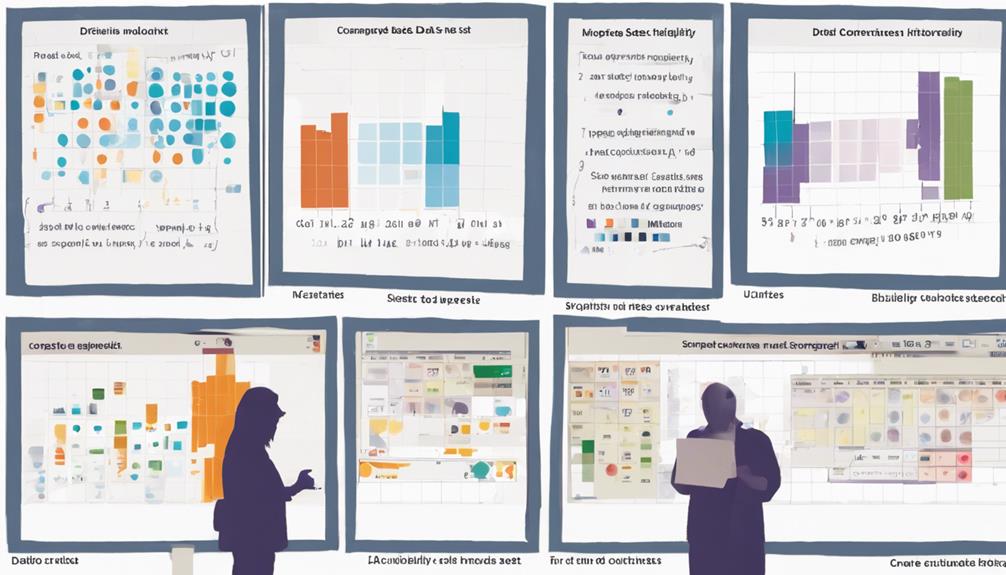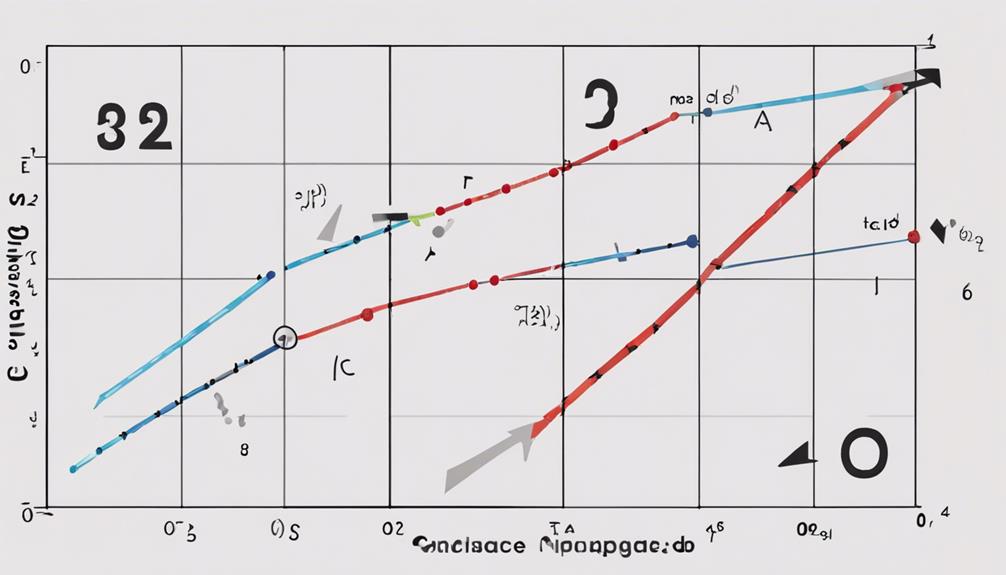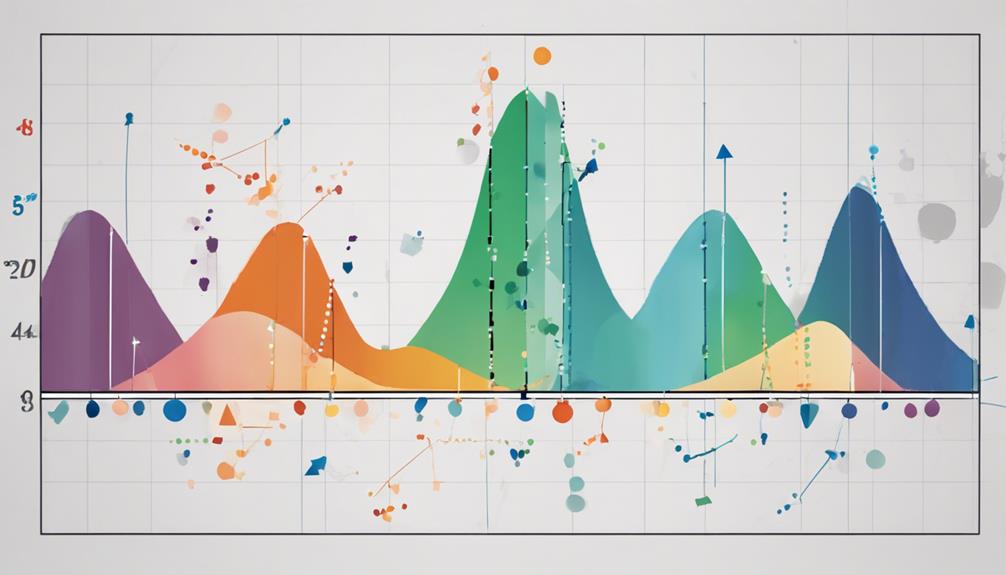In the realm of statistical analysis, mastering the nuances of standard deviation is paramount for drawing accurate conclusions from data. The significance of this metric cannot be overstated, making it essential to adhere to best practices when conducting standard deviation analysis.
By implementing five key tips, analysts can navigate the complexities of variance measurement with precision and confidence. These insights offer a foundational framework for enhancing statistical interpretations and ensuring robust decision-making processes.
Understanding Standard Deviation Basics
Standard deviation, a key statistical measure, quantifies the extent of dispersion of data points around the mean in a dataset. It provides valuable insights into the variability and spread of data, aiding in understanding the distribution of the data. A high standard deviation indicates greater variability within the dataset, suggesting that data points are spread out over a wider range. Conversely, a low standard deviation indicates that data points are clustered closely around the mean.
Understanding the basics of standard deviation is crucial for effective data analysis and interpretation. It helps in assessing data reliability and consistency, enabling the identification of trends and outliers within the dataset. When looking at the standard deviation, it is essential to consider the sample size as larger samples typically result in a more reliable estimate of the population standard deviation. Additionally, within two standard deviations of the mean, a significant portion of the data points can usually be found, making it a critical range to analyze when examining the dataset.
Selecting the Appropriate Data Set

When preparing to conduct standard deviation analysis, the initial step involves carefully selecting a pertinent and adequately sized data set.
Key Points to Consider:
- Relevance and Accuracy: Ensure the data set chosen for analysis is relevant to the research question at hand. It is crucial to verify the accuracy and completeness of the data set to avoid erroneous interpretations of standard deviation measures.
- Sample Size Significance: Opt for a data set with a sufficient sample size to ensure statistical significance in the standard deviation analysis. Working with a sample that is too small may not accurately represent the population's variability.
- Alignment with Objective: Select a data set that aligns with the research objective to derive meaningful insights from the standard deviation analysis. The nature of the data set, whether continuous or discrete, should also be considered when interpreting standard deviation to accurately represent the amount of variability present.
Calculating Standard Deviation Correctly

To ensure accurate statistical analysis, precision in calculating deviation is paramount in data evaluation processes. When performing standard deviation calculation, it is crucial to use the appropriate formula depending on whether you are working with a population or a sample.
Begin by calculating the mean of the data set, then square the deviations of each data point from the mean. Summing up these squared deviations and dividing by either the total number of data points in the population or n – 1 in the case of a sample will yield the variance. Taking the square root of the variance gives the standard deviation.
The adjustment of using n – 1 in the denominator for sample standard deviation helps mitigate bias and provides a more accurate estimate. Understanding the distinction between sample and population standard deviation is essential for drawing precise conclusions in data analysis.
Utilizing standard deviation calculators or software tools can streamline the process, particularly when dealing with extensive datasets.
Interpreting Standard Deviation Results

Analyzing standard deviation results involves scrutinizing the dispersion of data points in relation to the mean, providing valuable insights into the variability and consistency within the dataset.
When interpreting standard deviation values in statistical analysis, it is essential to:
- Compare to the Mean: Understanding the standard deviation in relation to the mean helps determine the extent of deviation from the average value. A higher standard deviation indicates greater variability within the data set.
- Impact of Outliers: Outliers can significantly affect standard deviation values, leading to skewed interpretations. Identifying and addressing outliers is crucial to ensure the standard deviation accurately represents the central tendency of the data.
- Apply Empirical Rule: Utilizing the 68-95-99.7 empirical rule allows for a quick assessment of how data is distributed based on standard deviation. This rule states that for data following a normal distribution, approximately 68%, 95%, and 99.7% of the data fall within 1, 2, and 3 standard deviations from the mean, respectively.
Applying Standard Deviation in Analysis

Standard deviation serves as a crucial metric for assessing the spread and variability of data points around the mean in statistical analysis. To calculate the standard deviation, one must first determine the mean of the dataset.
Subsequently, the differences between each data point and the mean are calculated, squared, and then averaged. Squaring the differences ensures that negative deviations do not cancel out positive ones. The square root of this average provides the standard deviation, representing the dispersion of data points from the mean.
This deviation is a statistical measure that is particularly useful when data points follow a normal distribution. It provides an unbiased estimate of the variability within the dataset.
Can I Use the Standard Deviation Analysis Tips for Technical Analysis?
Yes, you can use the best technical analysis guides for standard deviation analysis. These guides provide valuable insights and tips for conducting effective technical analysis, including how to utilize standard deviation as a tool for evaluating price volatility and making informed trading decisions.
Frequently Asked Questions
What Is the Easiest Way to Understand Standard Deviation?
Understanding standard deviation is facilitated by its ability to quantify data spread around the mean, showing deviation from average values. It aids in assessing data variability, detecting trends, and comparing datasets. High deviation signifies greater variability; low deviation indicates data proximity to the mean.
What Are the 4 Steps to Solve for Standard Deviation?
The four steps to solve for standard deviation involve calculating the mean, finding differences from the mean, squaring these differences, summing them, and taking the square root. This process aids in understanding data variability and spread.
What Are the 5 Steps to Calculate Standard Deviation?
To calculate standard deviation, first find the mean of the dataset. Then compute the squared difference between each data point and the mean. Sum these squared differences, divide by n-1 to get variance, and finally, take the square root for standard deviation.
How Do You Analyze Standard Deviation?
Analyzing standard deviation involves assessing data variability around the mean. By examining the spread of data points, one can understand consistency and identify outliers. Comparing standard deviations across datasets provides insights into data reliability, aiding in informed decision-making.
Conclusion
In conclusion, mastering standard deviation analysis requires attention to detail and a thorough understanding of the data being analyzed. By following the five essential tips outlined in this article, researchers can ensure accurate and meaningful results in their statistical analysis.
For example, when conducting a study on the impact of a new teaching method on student performance, accurately calculating the standard deviation of test scores can provide valuable insights into the effectiveness of the intervention.


